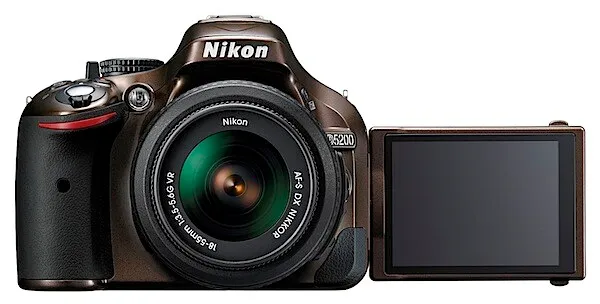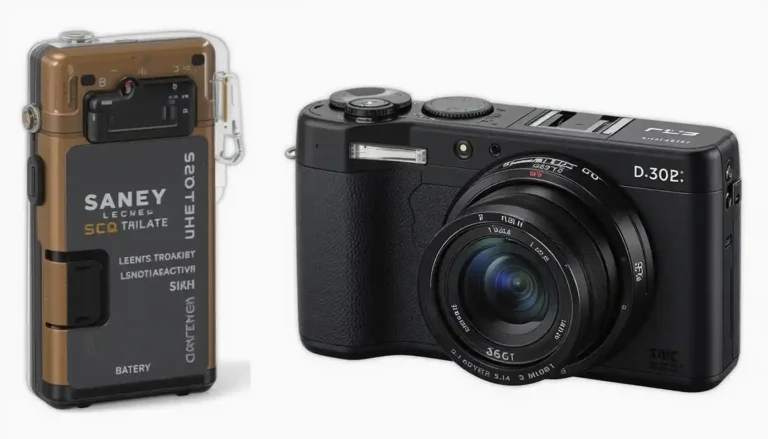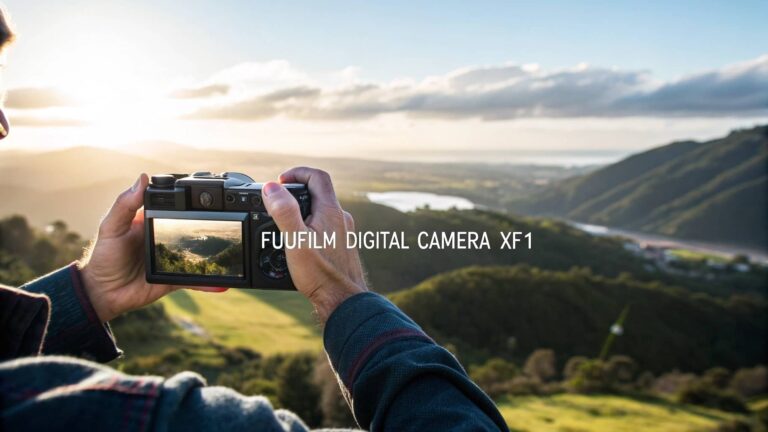What is Bullet Camera? Full Guide to Types, Features, Pros, Uses & Installation
What is bullet camera? It’s a question many homeowners and businesses ask when looking for reliable video surveillance. Bullet cameras are one of the most commonly used types of security cameras, recognizable by their cylindrical shape and long-range capabilities. These cameras are not only easy to install but also highly effective in outdoor environments due to their robust build and long-distance viewing capabilities.
In this guide, you’ll learn everything you need to know about bullet cameras, from their working mechanism and features to types, installation, and how to choose the right one for your specific needs.
What is Bullet Camera? A Simple Explanation
A bullet camera is a type of surveillance camera with a long, cylindrical design, often resembling a bullet or lipstick tube. Designed primarily for outdoor use, bullet cameras are popular for their narrow field of view, weatherproof build, and long-range monitoring capabilities.
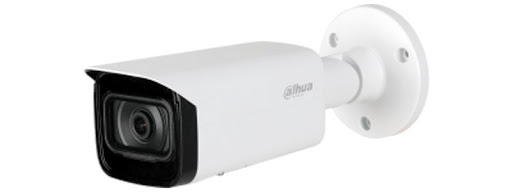
These cameras are typically mounted on walls or ceilings and pointed in a fixed direction, making them ideal for monitoring entrances, driveways, and wide outdoor areas. Due to their visible shape, they also act as a deterrent to intruders.
How Does a Bullet Camera Work?
A bullet camera captures video by focusing light through its lens onto an image sensor (CCD or CMOS). This light is then converted into a digital signal that can be stored, viewed live, or transmitted to a network.
Key components that make a bullet camera function effectively:
- Lens: Often fixed, sometimes varifocal or zoom-capable.
- Image sensor: Converts visual info into a digital feed.
- IR LEDs: Allow for night vision capabilities.
- Power supply: Can be powered via PoE (Power over Ethernet), AC adapter, or battery.
- Network connection: Wired (coaxial/Ethernet) or wireless for remote access.
Some bullet cameras also come with motion detection, two-way audio, and integration with cloud-based or local DVR/NVR systems.
Key Features of Bullet Cameras
Here are the most essential features of bullet cameras that make them a preferred choice:
- Long-Range Viewing: Ideal for wide-open spaces like parking lots or perimeters.
- Infrared Night Vision: Ensures visibility in complete darkness using IR LEDs.
- Weather Resistance: Most bullet cameras have an IP66 or IP67 rating for rain and dust.
- High Definition Recording: Ranging from 720p to 4K resolution.
- Wide Dynamic Range (WDR): Adjusts to varying light conditions for clearer images.
- Remote Access: Many models offer app support for real-time viewing and alerts.
Types of Bullet Cameras
Bullet cameras are available in several variations to meet different security needs.
| Type | Description | Ideal For |
|---|---|---|
| Mini Bullet | Small, discreet cameras with wide-angle lenses | Indoor areas, front doors |
| Outdoor Bullet | Weatherproof housing and long range | Driveways, backyards, building perimeters |
| PTZ Bullet | Allows pan, tilt, and zoom remotely | Large properties, warehouses |
| Wireless Bullet | No need for cables; uses Wi-Fi | Apartments, temporary setups |
| IP Bullet | Internet Protocol cameras with smart features | Smart home integration |
Bullet Camera vs Dome vs PTZ Cameras
Choosing the right camera often means comparing options. Here’s how bullet cameras stack up:
| Feature | Bullet Camera | Dome Camera | PTZ Camera |
|---|---|---|---|
| Visibility | High (visible deterrent) | Low (discreet) | Moderate |
| Range | Long | Medium | Very long (with zoom) |
| Movement | Fixed (or PTZ variant) | Usually fixed | Fully motorized |
| Installation | Easy | Slightly complex | Complex |
| Best Use | Outdoors | Indoors | Large-scale monitoring |
Where Are Bullet Cameras Commonly Used?
Bullet cameras are used in many places because they are simple and effective. In homes, people use them to watch over driveways, front doors, and backyards. This helps keep an eye on visitors, packages, or anything unusual.
In offices and commercial buildings, bullet cameras help watch parking lots, entrances, and delivery areas. They make sure everything stays safe and secure.Shops and stores use them to stop stealing and to see how customers move around. This helps with both security and improving the shopping experience.In warehouses, these cameras cover big storage areas and check who is coming in or going out. This helps protect valuable goods.
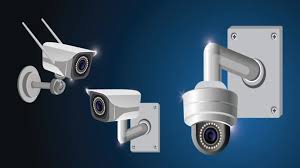
At construction sites, bullet cameras keep an eye on expensive tools and materials. They also help watch the area to stop theft or damage.Because of their shape and how easy they are to see, bullet cameras often scare off troublemakers before anything happens.
Advantages of Bullet Cameras
High Visibility:
Bullet cameras have a bold and clear look that’s easy to spot. This makes them a great tool to scare off intruders before they even try anything.
Easy to Install:
They are simple to mount on walls or ceilings using standard brackets. Even basic setups can be installed quickly without needing special tools.
Long-Range Coverage:
These cameras are great for watching over large areas like parking lots or long driveways. Their design allows them to focus clearly on distant points.
Cost-Effective:
You can find many bullet camera models at affordable prices. Even the budget-friendly options come with strong features like night vision and motion detection.
Weatherproof Options:
Many bullet cameras are made to handle tough outdoor conditions. They often come with weatherproof housing, making them ideal for all kinds of weather.
Disadvantages of Bullet Cameras
- Conspicuous Design: May not blend into environments where discreet surveillance is preferred.
- Vulnerable to Vandalism: Can be tampered with if mounted low.
- Fixed View: Limited adjustability unless using a PTZ variant.
- Requires Cleaning: Prone to dust, rain spots, or cobweb buildup.
How to Choose the Right Bullet Camera
Before buying, consider the following factors:
- Indoor or Outdoor Use: Ensure it has an IP rating if you’re placing it outdoors.
- Field of View: Wide-angle lenses are better for small areas; telephoto lenses for long-range.
- Resolution: Go for 1080p or 4K for clear footage.
- Power Supply: Choose between PoE, battery, or wireless models.
- Storage Options: Cloud vs local DVR/NVR.
- Smart Features: Look for motion alerts, mobile access, and AI detection if needed.
Quick Tip: Read our bullet camera buying guide for a checklist of must-have features. (Internal link)
Best Bullet Camera Brands & Models in 2025
Some top-rated models to consider:
- Reolink RLC-810A – 4K bullet camera with person/vehicle detection
- Lorex E893DD – Smart deterrence camera with color night vision
- Axis P1445-LE – Professional-grade camera with WDR and IR
- Verkada CB62-E – Plug-and-play with cloud access
- Hikvision DS-2CD2087G2 – ColorVu technology and wide viewing angle
These cameras offer a combination of advanced features and reliable performance.
Bullet Camera Installation Guide
Installing a bullet camera is easy if you follow the right steps and use the proper tools. Here’s a simple guide to help you set it up the right way.
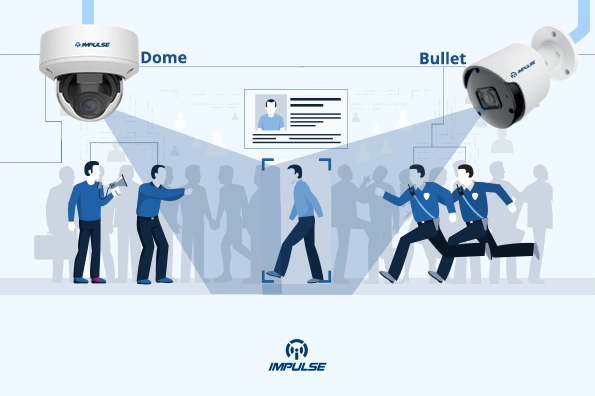
Tools You’ll Need:
- Drill – To make holes for the mounting screws.
- Mounting screws – Usually come with the camera for secure fixing.
- Ethernet or power cables – Needed for wired cameras.
- Ladder – Useful for reaching higher spots during outdoor installation.
- DVR/NVR or Wi-Fi router – Depending on whether your camera is wired or wireless.
Steps:
1. Choose a location:
Pick a place that gives you a wide view. A height of about 8–10 feet is ideal to avoid tampering while still capturing clear footage.
2. Mount the camera:
Use the provided brackets and screws to attach the camera securely to a wall or ceiling. Make sure it’s stable and won’t shake in the wind.
3. Connect cables or pair Wi-Fi:
For wired cameras, connect the power and video cables. For wireless models, follow the pairing steps using your Wi-Fi router or mobile app.
4. Adjust the angle:
Tilt and rotate the camera to get the best view of the area you want to monitor. You may need to test and adjust a few times.
5. Set up recording and viewing:
Use a DVR or NVR for wired systems, or a mobile app for wireless ones. Configure the camera settings like motion alerts, recording times, and video quality.
Smart Security Integration
Modern bullet cameras can be integrated into:
- Mobile apps: View live feeds, receive alerts.
- Home automation systems: Trigger lights or alarms.
- AI systems: For object or face recognition.
- Cloud-based platforms: Store footage online for easy access.
Using IFTTT, Google Home, or Alexa, you can create custom routines involving your bullet camera.
Maintenance Tips for Bullet Cameras
- Clean lens every 2–4 weeks to avoid blurry footage.
- Check for cobwebs, especially on outdoor models.
- Inspect mounting brackets after storms.
- Regularly update firmware for enhanced security and features.
- Use weatherproof covers if placed in extreme climates.
FAQs About Bullet Cameras
1. What makes bullet cameras different from other security cameras?
Bullet cameras have a long, cylindrical shape and are ideal for outdoor use with long-range capabilities.
2. Are bullet cameras good for night vision?
Yes, most come with built-in IR LEDs for night surveillance in complete darkness.
3. Can I use a bullet camera indoors?
Yes, especially mini bullet cameras. They work well in hallways and large rooms.
4. Do bullet cameras record audio?
Some models include microphones, but check your local laws before enabling.
5. How far can bullet cameras see?
Depending on the lens, some bullet cameras can monitor areas up to 800 feet away.
6. Are bullet cameras waterproof?
Many are. Look for IP66/IP67 ratings to ensure weather resistance.
7. Can bullet cameras be hacked?
IP-based cameras can be vulnerable if not secured. Always change default passwords and update firmware.



